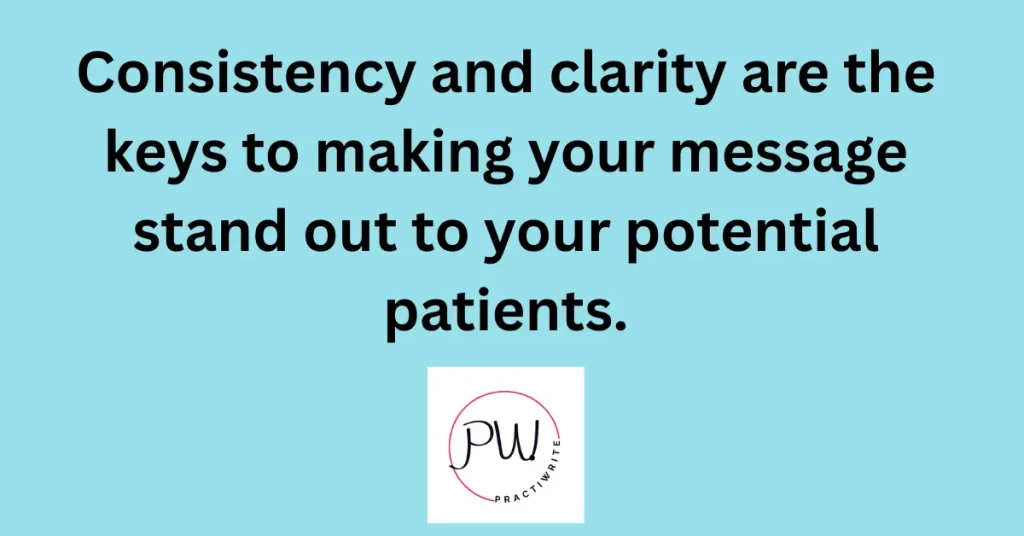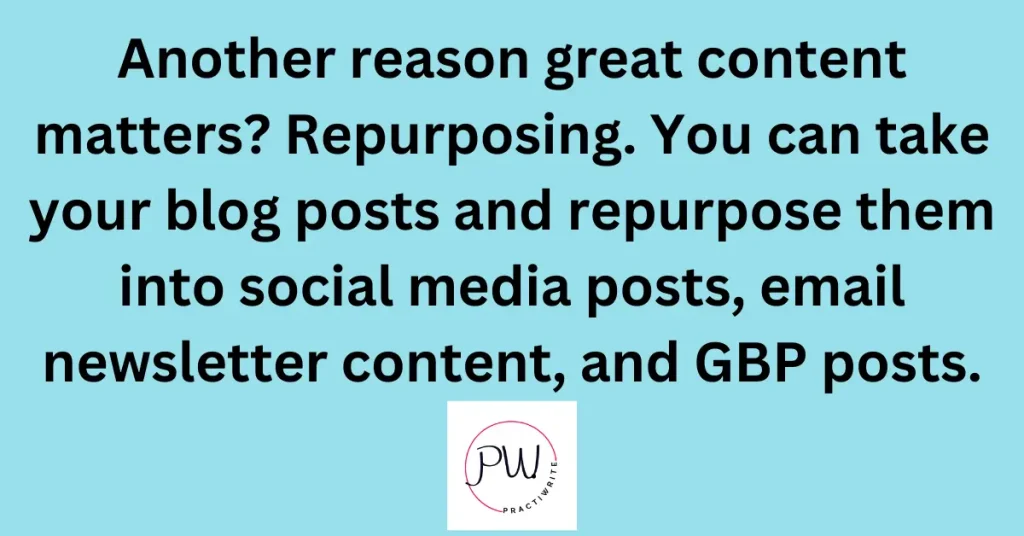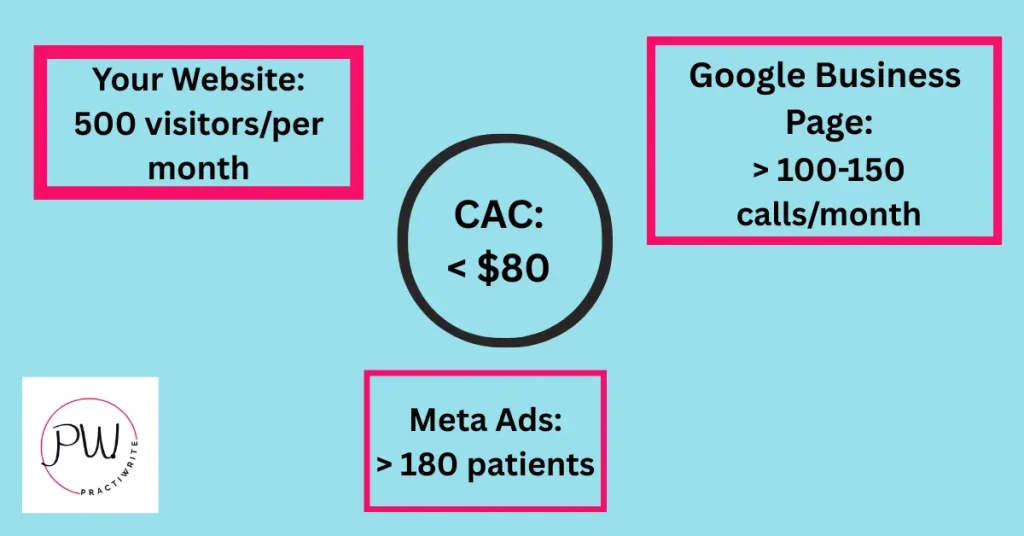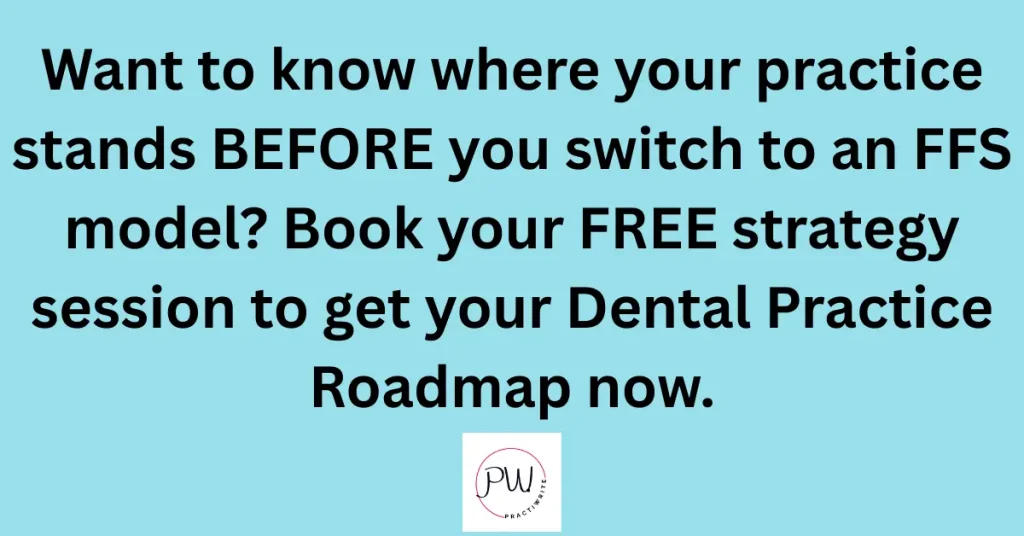Going Fee-For-Service doesn’t magically fill your chairs with dream patients.
You could have the best dentistry in town, the friendliest team, and the nicest operatories money can buy.
But if nobody knows about you, or if you’re still marketing like a generic PPO office, you’ll be sitting in a very expensive ghost town.
The good news? You don’t need a six-figure marketing budget to win.
You just need to be strategic, intentional, and relentless about telling your story to the right people in the right ways.
Most dentists make one of two mistakes when they drop insurance:
- They stop marketing altogether because they think “word of mouth” will carry them.
- They throw money at random ads or agencies with no strategy, then wonder why nothing sticks.
This article is your antidote to both.
I’m going to show you exactly how to market your FFS dental practice on a budget, without looking cheap, without diluting your brand, and without spending your evenings trying to master TikTok dances (unless you really want to, not judging).
You’ll learn:
- How to sharpen your brand message so you attract patients who value quality over discounts.
- Which low-cost marketing tactics actually move the needle for FFS practices.
- How to use your existing patients and community connections as a growth engine.
- Real-life examples of FFS practices that built a thriving patient base without blowing up their budget.
Marketing a fee-for-service dental practice can help establish your practice’s reputation, increase its visibility, and boost bookings, all without depleting your savings.
Table of Contents
Why Marketing Your Newly Fee-For-Service Practice Matters
If you’re planning to drop PPOs and dive into fee-for-service, the time to start marketing isn’t after you’ve sent your “we’re going out-of-network” letters. It’s 6–12 months before you cut the cord.
That’s survival strategy.
Here’s why:
When you leave insurance networks, you lose the free patient flow those directories brought in. Unless you already have a steady stream of self-selecting patients (i.e., people who actively choose you for your quality and experience), you’ll feel that drop like a punch to the gut.
The American Dental Association’s HPI data shows that practices relying heavily on PPOs can see a 15–30% decline in active patients in the first year post-drop if they don’t proactively replace that source.
That’s why the smartest FFS transitions treat marketing like a runway. You build momentum before you take off.
Build the Runway: The 3 Non-Negotiables
There are hundreds of marketing tactics out there, but for a Fee-For-Service practice, three will give you the highest return, especially if you’re starting on a tight budget:
- Website Strength
- Your website is your first impression for most new patients. 77% of patients search online before booking with a healthcare provider (Pew Research Center).
- An FFS site needs to look premium, load fast, and answer two things instantly: Why should I choose you? and How do I book?
- Bonus: Local SEO-optimized content ensures you’re found for terms that attract value-driven patients, not bargain hunters.
- Your website is your first impression for most new patients. 77% of patients search online before booking with a healthcare provider (Pew Research Center).
- Google Business Profile (GBP) & Local Maps Pack Rankings
- Nearly 68% of all patient searches include a location-based element (“dentist near me,” “cosmetic dentist in [city]”).
- High GBP rankings in the local “Maps Pack” can drive more traffic than your website alone, and it’s free to optimize.
- Your GBP should be updated weekly with fresh photos, service posts, and consistent review responses.
- Nearly 68% of all patient searches include a location-based element (“dentist near me,” “cosmetic dentist in [city]”).
- Meta Ads (Facebook & Instagram)
- With the right targeting, Meta ads can put your practice in front of the exact demographics you want (income range, zip code, interests, and even life events).
- Compared to Google Ads, Meta can be a more budget-friendly way to build awareness before your insurance drop.
- Practiwrite Tip: Ads perform best when paired with a strong website landing page; never send clicks to your homepage.
- With the right targeting, Meta ads can put your practice in front of the exact demographics you want (income range, zip code, interests, and even life events).
When you get these three engines working together, you create a self-sustaining patient flow that doesn’t depend on insurance directories.
And the payoff? Practices that invest in proactive marketing before dropping insurance consistently see smoother transitions, shorter “income dips,” and stronger long-term growth.
In fact, an internal analysis of FFS transitions across multiple markets showed that those who began targeted marketing at least six months pre-drop retained 20–30% more patients in their first year compared to those who waited until after.
Marketing isn’t optional when you go FFS. It’s your new lifeline.
The sooner you start building it, the more confident you’ll be when it’s time to make the switch.
Getting Crystal Clear on Your FFS Brand Message
Marketing is about being chosen. If your message is fuzzy, generic, or all about “we offer quality care,” you’ll blend right into the background with every other dentist in town.
The goal of your brand message is simple:
When a potential patient finds you (whether on your website, in the Google Maps Pack, or through a Meta ad) they should instantly know why you’re different and why you’re worth paying out-of-pocket for.
Step 1: Define Your Ideal Patient
You can’t target everyone, especially in an FFS model. Ask yourself:
- Who values my time, expertise, and patient experience?
- What treatments are most profitable and rewarding for me to deliver?
- Where do my best patients live, work, and spend their time online?
A 2025 HubSpot study found that targeted messaging to a well-defined audience can improve conversion rates by over 200%. That’s the difference between “a good-looking ad” and an ad that fills your schedule.
Step 2: Create a Clear Value Statement
Patients want to know:
- What you do best
- How it benefits them
- Why it’s worth more than the PPO office down the street
Example for a premium cosmetic FFS practice:
“We help busy professionals achieve confident, camera-ready smiles with custom treatments that fit your schedule, last for years, and never compromise on quality.”
This statement becomes the backbone of:
- Your website homepage headline (Website Strength pillar)
- Your Google Business Profile description (GBP pillar)
- Your Meta ad copy (Meta Ads pillar)
Step 3: Make the Message Consistent Everywhere
A confused prospect will never book. If your website says “personalized care,” your GBP says “affordable family dentistry,” and your Meta ads say “get cheap veneers,” you’ve already lost them.
Brand consistency research, brands with consistent messaging see a 23% average revenue increase compared to those that don’t.
How to keep it consistent:
- One headline + subheadline format across your homepage, GBP, and ad creative
- Same tone of voice in every piece of copy (professional yet approachable)
- Same colors, logo, and photo style in every platform you use
Step 4: Speak to Outcomes, Not Procedures
Patients don’t wake up wanting a crown or veneer. They want the result.
Instead of: “We offer porcelain veneers,” say:
“Transform your smile in just two visits with custom veneers designed to last 10+ years.”
This outcomes-first approach should show up on:
- Your treatment pages (Website Strength pillar)
- Your GBP service descriptions (GBP pillar)
- Your Meta ad visuals and captions (Meta Ads pillar)
When you’ve nailed your FFS brand message, every marketing dollar works harder because every click, view, and call is reinforced with the same promise.
And that’s how you start attracting your people.
The ones who happily pay for quality and stick with you long after you’ve left the PPO world.

Low-Cost, High-Impact Marketing Strategies for FFS Dental Practices
If you want to attract patients who will happily choose you without an insurance directory telling them to, you don’t have to outspend the big corporate chains.
You have to outsmart them.
Here’s how to market like a heavyweight on a lightweight budget.
Optimize Your Website for Conversion, Not Just Looks (Website Strength)
A sleek design is great, but if your website isn’t built to turn visitors into booked patients, you’re wasting traffic.
- Load Speed: 53% of mobile visitors leave if a page takes longer than 3 seconds to load (Google).
- Clear Calls-to-Action (CTAs): Make “Book Now” or “Request an Appointment” visible above the fold on every page.
- Before & After Galleries: Build trust instantly, especially for high-value treatments like veneers or implants.
- Dedicated Landing Pages for Campaigns: Never send ad clicks to your homepage; send them to a tailored page with one specific offer or service focus.
Dominate the Google Maps Pack (GBP/Local SEO)
If you want to be found without paying for every click, GBP optimization is your best friend, and it’s free to do.
- Complete Your Profile: Fill out every field (services, hours, categories, description).
- Weekly Updates: Post new photos, patient testimonials, and treatment spotlights every week. Active profiles rank higher.
- Review Strategy: Ask every happy patient for a Google review. A study found that each additional star on a review profile can increase revenue by 5–9%.
- Local Keywords: Work “cosmetic dentist in [city]” or “dental implants near [city]” into your GBP description and website metadata.
Run Targeted Meta Ads to Prime the Right Audience (Meta Ads)
Meta ads (Facebook & Instagram) let you hyper-target the audience most likely to convert to FFS patients.
- Demographics & Location: Target by income bracket, homeownership, and zip codes.
- Life Events: Engagements, weddings, graduations; perfect triggers for cosmetic interest.
- Retargeting: Show ads to people who have visited your website in the last 30–60 days but haven’t booked yet.
- Budget Tip: Even $10–$20/day can bring steady traffic if your targeting and ad creative are dialed in.
Launch a Referral & Review Program (Internal Marketing)
Your best future patients are already sitting in your chair.
- Offer small, thoughtful rewards for patient referrals (gift cards, free whitening syringes).
- Recognize and thank reviewers publicly on social media (with their permission).
- According to Nielsen, 92% of people trust recommendations from friends and family over any form of advertising.
Tap Into Grassroots & Community Marketing (Offline, Low-Cost)
- Partner with local gyms, bridal boutiques, and salons for cross-promotions.
- Sponsor a local school event or sports team (often costs less than a single month of ads).
- Speak at community events or host free smile workshops; position yourself as the go-to expert.
Content Marketing That Pulls Patients In
Create blog posts, videos, and guides that answer the exact questions your ideal patients are Googling.
- Post on your site (SEO value), GBP (local SEO boost), and social (engagement value).
- Example topics: “5 Myths About Cosmetic Dentistry,” “How to Choose a Dentist Without Insurance.”
- HubSpot reports that businesses prioritizing content marketing generate 3x more leads at a 62% lower cost than traditional marketing.

Case Studies: Successful Low-Budget Marketing in Action
You don’t have to imagine how these strategies could work. You can borrow directly from practices that have already pulled it off.
Case Study 1: Small-Town Practice Wins the Local Maps Pack
Location: Rural Oregon – 3 operatories, mostly family dentistry with growing cosmetic interest
Challenge: Limited walk-in traffic and little online presence beyond a basic website.
Action Taken:
- Fully optimized their Google Business Profile with 25+ service listings, professional photos, and weekly updates.
- Asked every satisfied patient for a Google review at checkout, using a QR code on the front desk.
- Linked GBP posts to related landing pages on their website for SEO synergy.
Result: Within 6 months, they ranked in the top 3 in the Google Maps Pack for “dentist near me” and “cosmetic dentist [city].” New patient calls increased by 42%, with zero ad spend.
Case Study 2: $15/Day Meta Ads Bring in Cosmetic Leads
Location: Suburban Florida – FFS-focused cosmetic practice in competitive market
Challenge: Needed more cosmetic inquiries without breaking their ad budget.
Action Taken:
- Ran targeted Meta ads to women ages 28–50 in a 10-mile radius, focusing on upcoming weddings and engagements.
- Created a dedicated veneer landing page with before-and-after photos and an easy “Book Your Consult” form.
- Retargeted website visitors with follow-up ads offering a free smile assessment.
Result: Averaged 8–10 veneer inquiries per week with a $15/day ad spend; closed 40% into paid consultations.
Case Study 3: Website Overhaul Turns Clicks into Patients
Location: Mid-sized Texas city – transitioning from PPO-heavy to hybrid model
Challenge: Old, slow website that didn’t reflect their premium positioning.
Action Taken:
- Rebuilt the site with fast-loading pages, mobile optimization, and clear calls-to-action.
- Added a smile gallery, patient testimonials, and service-specific landing pages.
- Incorporated the new brand message consistently across the site, GBP, and ads.
Result: Bounce rate dropped by 38%, online appointment requests increased by 55%, and the practice retained 90% of patients after dropping their lowest-paying PPO.
Key Lessons I Want You To Learn From These Wins:
- Visibility matters. Being found in the Maps Pack is free but requires intentional upkeep.
- Targeted ads work best when they point to a strong landing page, not your homepage.
- Website first impressions can make or break whether a potential patient books or bounces.
Measuring Your Results Without Overwhelm
One of the biggest mistakes I’ve seen dentists make with marketing (especially on a budget) is either tracking nothing or tracking everything.
Both lead to bad decisions.
In the first case, you don’t know what’s working, and in the second, you get buried in numbers that don’t matter.
For a Fee-For-Service practice, you only need to track a few key indicators tied directly to growth and profitability.
Website Strength Metrics (Conversion Over Traffic)
What to Track:
- Conversion Rate: The percentage of visitors who book an appointment or fill out a form. Industry benchmark: 3–5% for healthcare sites.
- Bounce Rate: The percentage of visitors who leave without clicking anything; should be under 50% for local service sites.
- Top Landing Pages: Which service pages get the most traffic and conversions.
How to Track:
- Use Google Analytics 4 (free) to set up “Goals” for appointment requests.
- Review monthly, not daily, small fluctuations are normal.
GBP/Local Maps Pack Metrics (Visibility to Calls)
What to Track:
- Search Impressions: How often your GBP listing shows up in search.
- Actions Taken: Calls, website visits, and directions requested from your GBP listing.
- Review Growth: Number of new reviews per month (aim for 4–6 minimum).
How to Track:
- Use GBP’s built-in “Performance” tab.
- Watch for upward trends in calls and clicks over 90-day windows.
Meta Ads Metrics (Cost Per Lead)
What to Track:
- Cost Per Lead (CPL): How much you spend to get one appointment request.
- Click-Through Rate (CTR): Percentage of people who clicked your ad after seeing it.
- Conversion Rate on Landing Pages: Percentage of ad clicks that turn into booked consultations.
How to Track:
- Use Meta Ads Manager for CTR and cost metrics.
- Link your landing page to Google Analytics to track conversions from ads.
The Ultimate Metric: Cost to Acquire a New Patient (CAC)
This is the one that matters most. CAC = Total marketing spend ÷ Number of new patients acquired.
- Example: If you spend $1,000 in a month and bring in 10 new patients, your CAC is $100.
- If your average new patient generates $800 in the first year, you’re winning.
Practiwrite Tip: Pick one metric from each pillar and track it monthly. Don’t get distracted by “vanity metrics” like Facebook likes or website sessions unless they connect directly to booked appointments. Those don’t put butts in your chairs.

Common Mistakes Dentists Make Marketing a FFS Practice (and How to Avoid Them)
Marketing a Fee-For-Service dental practice is a different game than marketing a PPO-heavy office.
You’re no longer competing on network placement, you’re competing on perceived value. That means the wrong marketing moves can cost you far more than the dollars you waste.
They can cost you your positioning.
Mistake 1: Waiting Until After Dropping PPOs to Market
If you don’t start building awareness and demand before you drop insurance, you’ll be scrambling to replace lost patient flow.
Avoid it: Start marketing at least 6–12 months before your PPO exit date. Treat it like a runway. You need momentum before takeoff.
Mistake 2: Relying Solely on “Word of Mouth”
Referrals are powerful, but they’re passive. Without proactive marketing, patient growth stalls.
Avoid it: Pair your referral strategy with at least one strong digital channel; Meta ads, Google Maps Pack, or blog content.
Mistake 3: Sending Traffic to a Weak Website (Website Strength)
You can spend hundreds (or thousands) driving people to your site, but if it loads slowly, looks outdated, or buries the “Book Now” button, you’ve already lost them.
Avoid it: Invest in a site that’s mobile-friendly, fast, and built for conversion before you spend a dime on ads.
Mistake 4: Ignoring Your Google Business Profile (GBP/Local SEO)
You could be the best dentist in town, but if you’re invisible in the Maps Pack, local patients will never know you exist.
Avoid it: Update GBP weekly, add fresh photos, and respond to every review to boost rankings and trust.
Mistake 5: Running Meta Ads Without a Target or Plan (Meta Ads)
Boosting random posts isn’t a strategy. It’s a donation to Meta’s bottom line.
Avoid it: Define your target audience, create service-specific landing pages, and track cost per lead religiously.
Mistake 6: Inconsistent Messaging Across Platforms
If your website screams “premium smile transformations” but your GBP says “affordable family dentistry,” you’re confusing prospects.
Avoid it: Lock down your brand message (see earlier section) and make sure it’s identical across all channels.
Practiwrite Tip: Every dollar you spend should be able to pass the “If I turn this off, will I feel it in my new patient numbers?” test. If the answer is no, it’s not worth your time or budget.

Final Thoughts & Some Encouragement
When you decide to go Fee-For-Service, you’re not just changing how you get paid.
You’re changing how you’re found, how you’re perceived, and who you attract.
If you wait until after you’ve dropped your PPOs to start marketing, you’re already playing catch-up. The practices that thrive through this transition aren’t necessarily the ones with the biggest budgets.
They’re the ones with the clearest message, the smartest strategy, and the discipline to execute it consistently.
Your three non-negotiables (a high-converting website, strong Google Maps Pack visibility, and laser-targeted Meta ads) will do more for your patient flow than a dozen scattered tactics ever could.
Layer on grassroots connections and a referral system, and you’ve got a growth engine that doesn’t rely on insurance directories to survive.
The truth? Fee-For-Service marketing doesn’t have to be expensive.
But it does have to be intentional.
If you’re ready to build your FFS patient base before you drop PPOs, create marketing that actually works, and set your practice up for long-term independence…
Schedule your strategy call today and get your personalized Dental Practice Roadmap.
I’ll show you exactly where you stand compared to your competition. And see where you can be in six months and beyond.
So you’re prepared when you step away from your PPOs.
And step into the freedom (and income) you always deserved.
10+ year content strategist, writer, author, and SEO consultant. I work exclusively with dental practices that want to grow and dominate their local areas.
